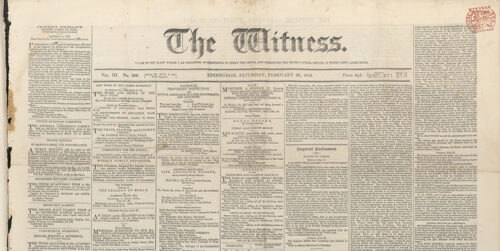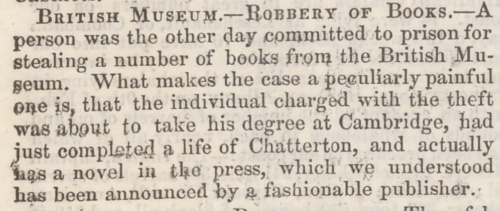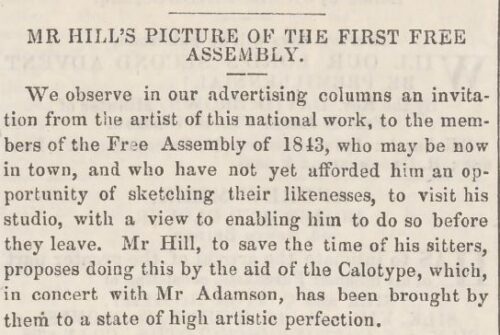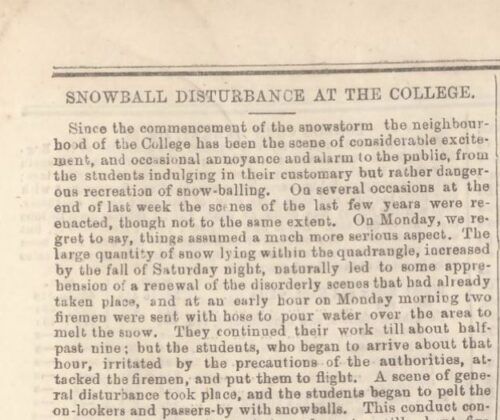
We’ve been working on digitising The Witness for quite some time now. Here’s a little background information from our previous post on the publication: ‘A twice weekly newspaper, The Witness was created by the Church of Scotland in 1840 and edited by Hugh Miller, an influential writer, geologist and stone mason. In 1843 The Church of Scotland was faced with 200 ministers walking out citing political interference, an event which came to be known as the Disruption and led to the Free Church being established. Presbyterianism is founded on the basis that the people make the decisions, not an elite hierarchy, and the only head of the church, is God. This makes The Witness newspaper a fantastic primary source covering a significant event in Scotland’s social and religious history, and as such, a prime candidate for digitisation.’
As the editions are bound into large format volumes, we decided to contract the digitisation to a company called Autodocs. Digitisation operators Miranda and Marian then took over the quality control and processing of the files and made some fun discoveries along the way – let’s hear from them!
While processing the Witness, we came across many amusing, interesting, and historically significant news stories. We’d like to share some highlights from our collection with you in the hopes that they’ll pique your interest – or at the very least make you laugh!

From 1856, I was delighted to find this advertisement for the famous Lea & Perrin’s Worcestershire Sauce. I was very intrigued to see the claim that the sauce could improve appetite and digestion!

From 1841, this brief snippet describing the robbery of books from the British Museum caught my attention. I did not understand the reference to ’a life of Chatterton’ and endeavored to learn more. As it turns out, this is a reference to the English poet Thomas Chatterton, who is described as a ’precocious poet’ whose life tragically ended at only age 17. Chatterton is credited with influencing the great poets Shelley, Keats, Wordsworth, and Coleridge.

A piece of photographic history that caught my eye was this mention of the Edinburgh duo David Octavius Hill and Robert Adamson, who played an important role in the development of the field of early photography. Here, an advert was issued in 1843 for members of the Free Assembly to have their likeness taken to be used as reference for a painting that David Hill was working on. This is thought to be the first painting created with the assistance of photography. You can find more information on the final painting here and some of the photographs taken by Hill and Adamson in the University’s collections.

While the Witness reported on more wide-reaching current and foreign affairs, snippets of local news are also featured including this report of a ‘scene of general disturbance’ at the hands of Edinburgh University students during some heavy snowfall in 1860.

And lastly, from 1861, here is a snippet of a review of ’Silas Marner’ one of the seminal works of English author George Eliot. The writer of this review correctly deduces that Eliot is in fact a woman and provides the endlessly amusing assertion that ’A morbid novelist is the most disagreeable of all creatures.’
In total, we processed over 11,000 images as part of this project which can now all be found on our Image Collections Website. We found this to be an interesting glimpse into a period of notable development and change in Scottish history and hope the digitised collection will be a useful resource now it is accessible online.
By Marian Conlan & Miranda Strachan, Digitisation Operators
Be First to Comment